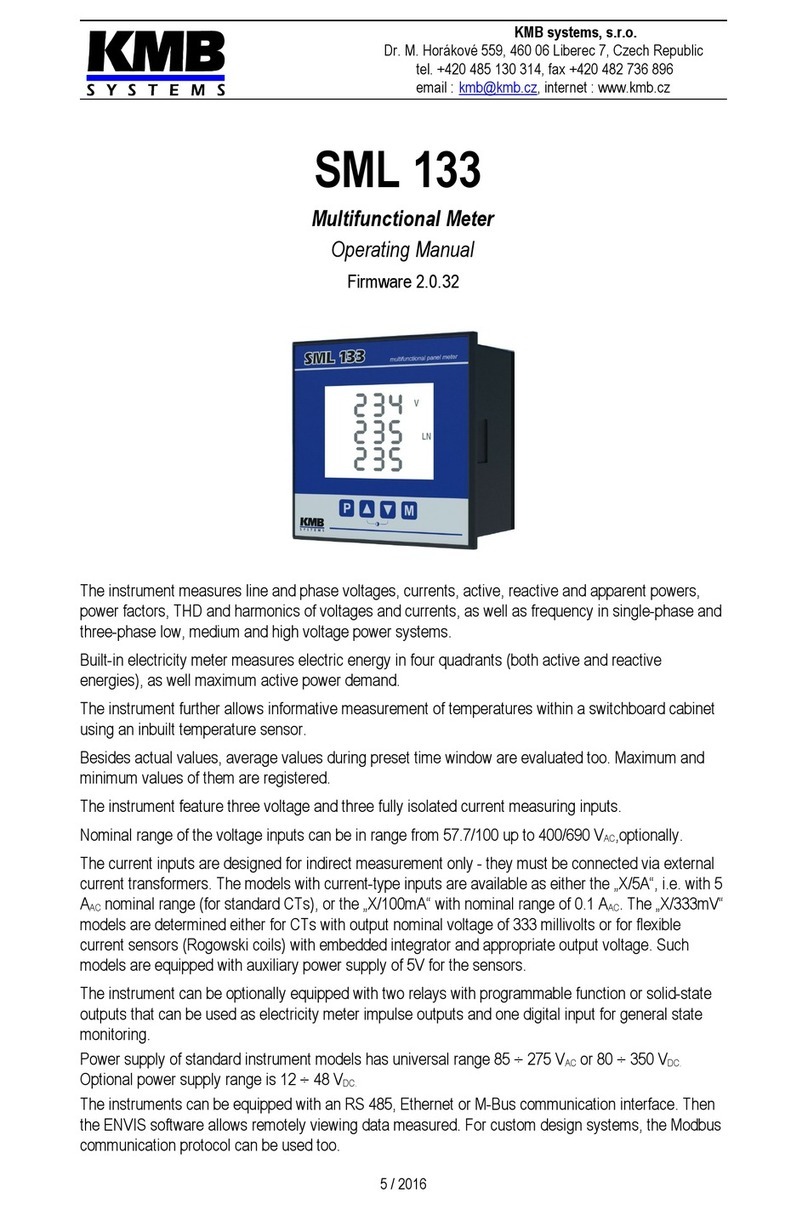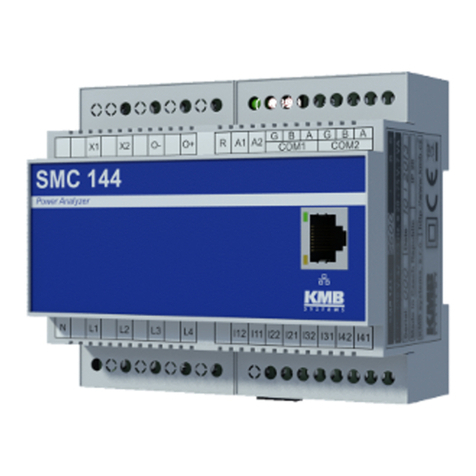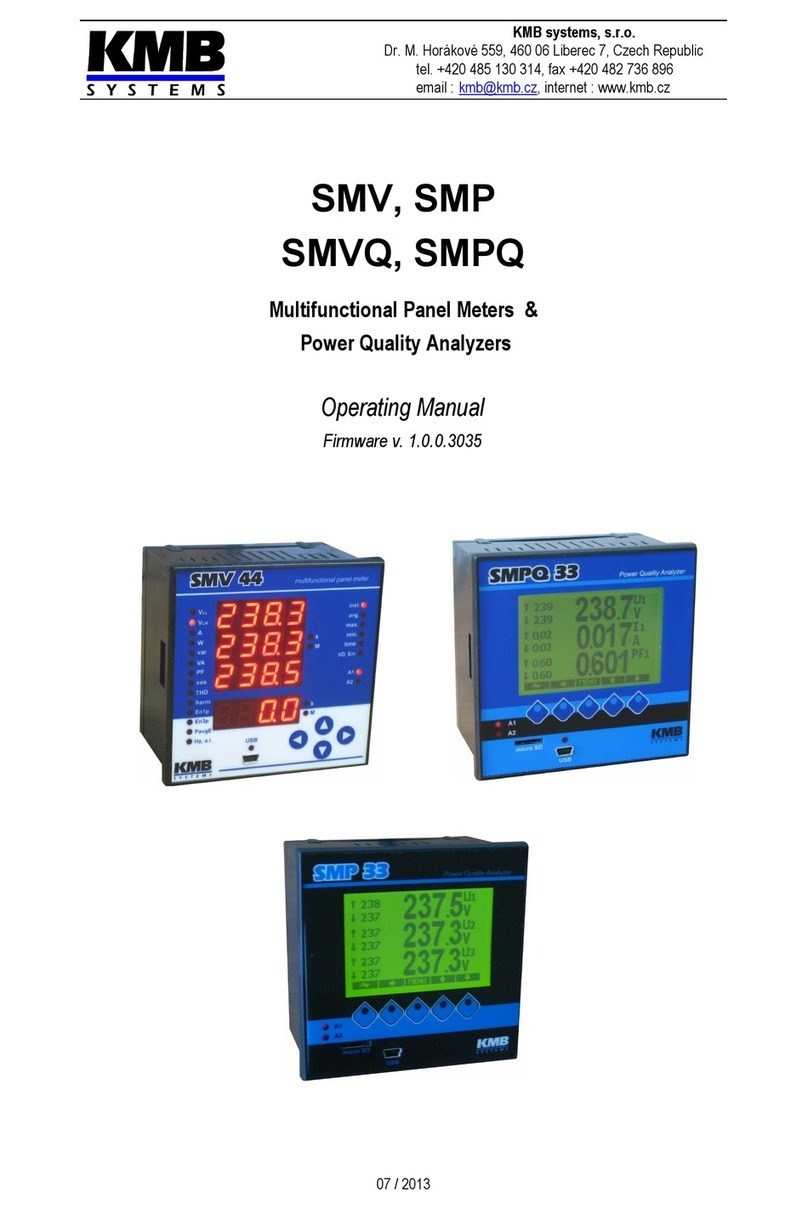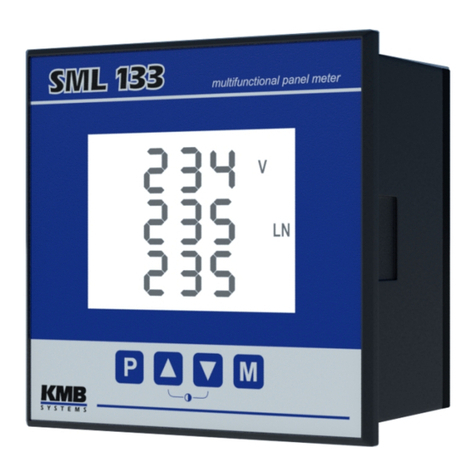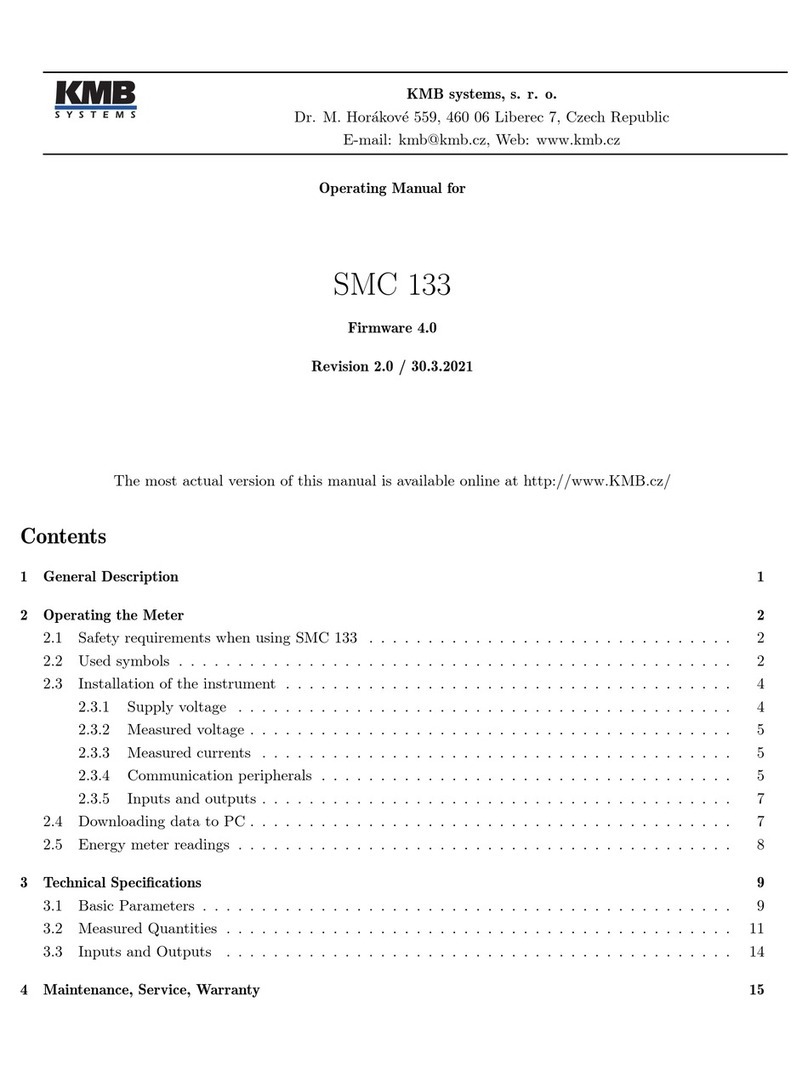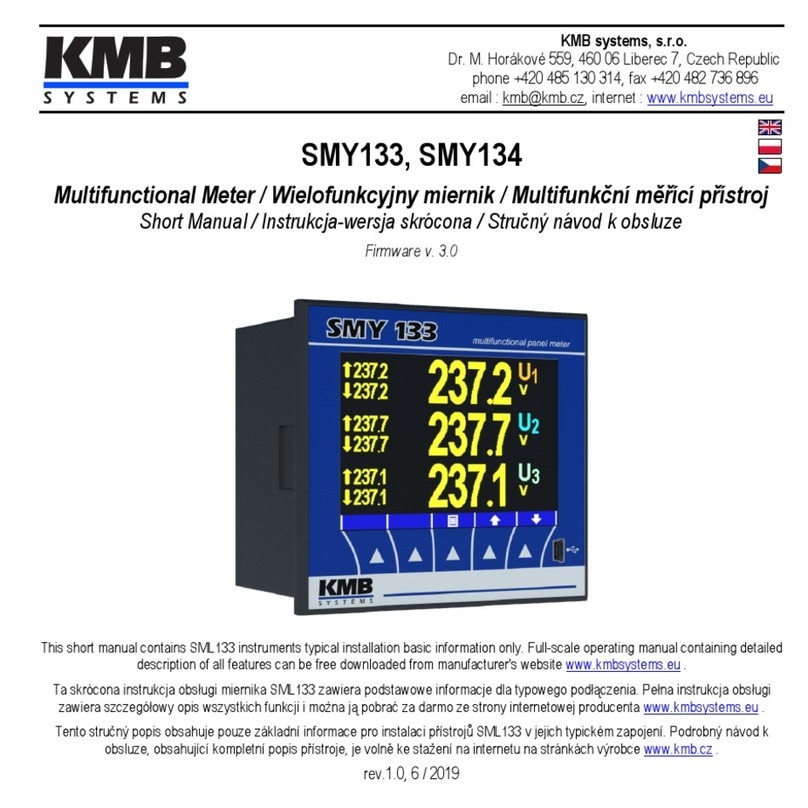SML133 Operating Manual
1.1.4.2 „ xxx“-, „Pxxx“-Type Instruments
The supplied current transformers (which are standard accessory) must be clamped on
measured wires and interconnected with corresponding terminal pairs I1k, I1l, I2k, I2l, I3k, I3l
(No. 41 ÷ 46) using a twisted-pair cable of maximum length of 3 m.
According the instrument model, corresponding CT type must be used.
WARNING : Connection of standard CTs with 5A or 1A nominal output current is
forbidden !!! Otherwise the instrument can be badly damaged !!!
The secondary winding of the through-hole (JP-type) transformers for the „Pxxx“-type instruments is
led by pair of fixed cables of length about 10 cm and requires a wiring block for interconnection to the
instrument terminals. It is recommended to orient the dark side of the transformer housing to the
source ("K"), the light side ("L") to the load – then, the light output cable is "k" and the dark cable is "l".
The secondary winding of the split-core (JC-type) transformers for the „Sxxx“-type instruments is led to
the screw terminals. The „K“/„L“ and „k“/„l“ orientation is marked on the CTs guide groove.
A connection cable maximum cross section area is 1.5 mm2. For example, the KU03G24 ( Nexans )
cable can be used.
Sxxx- an Pxxx- option mo els - CURRENT connector signals
pin No. signal
41, 42 I1k, I1l … L1 phase current
43, 44 I2k, I2l … L2 phase current
45, 46 I3k, I3l … L3 phase current
Note : To get better precision when using overweighted CTs, you can apply more windings of
measured wire through the transformer. Then you must set the multiplier parameter ( P.01
parameter,see below). For example, for 2 windings applied, set the multiplier to 1/2 = 0.5 .
For standard connection with 1 winding, the multiplier must be set to 1.
1.2 Basic Operation
On connecting power supply the display shows all of the segments, then gradually screens
with the instrument type and setting of basic parameters :
1. line 1 : 1 3 3 - instrument type number
line 2 : 5 A - current input type
line 3 : n. n n - firmware version number
2. when connection of voltage via voltage transformers set (otherwise the screen is skipped) :
line 1 : U t - voltage transformer connected identification
line 2 : nominal primary voltage [kV]
line 3 : 0. 1 - nominal secondary voltage [kV]
3. line 1 : C t - current transformer/range specification
line 2 : nominal primary current [A] for X/5A- current input type instruments, or current range
for the Sxxx- and Pxxx-type instruments
line 3 : nominal secondary current [A] for X/5A-type instruments, or multiplier for the S- and
P-type instruments
4. line 1 : F U - nominal frequency and voltage
line 2 : nominal frequency
line 3 : nominal voltage
3












